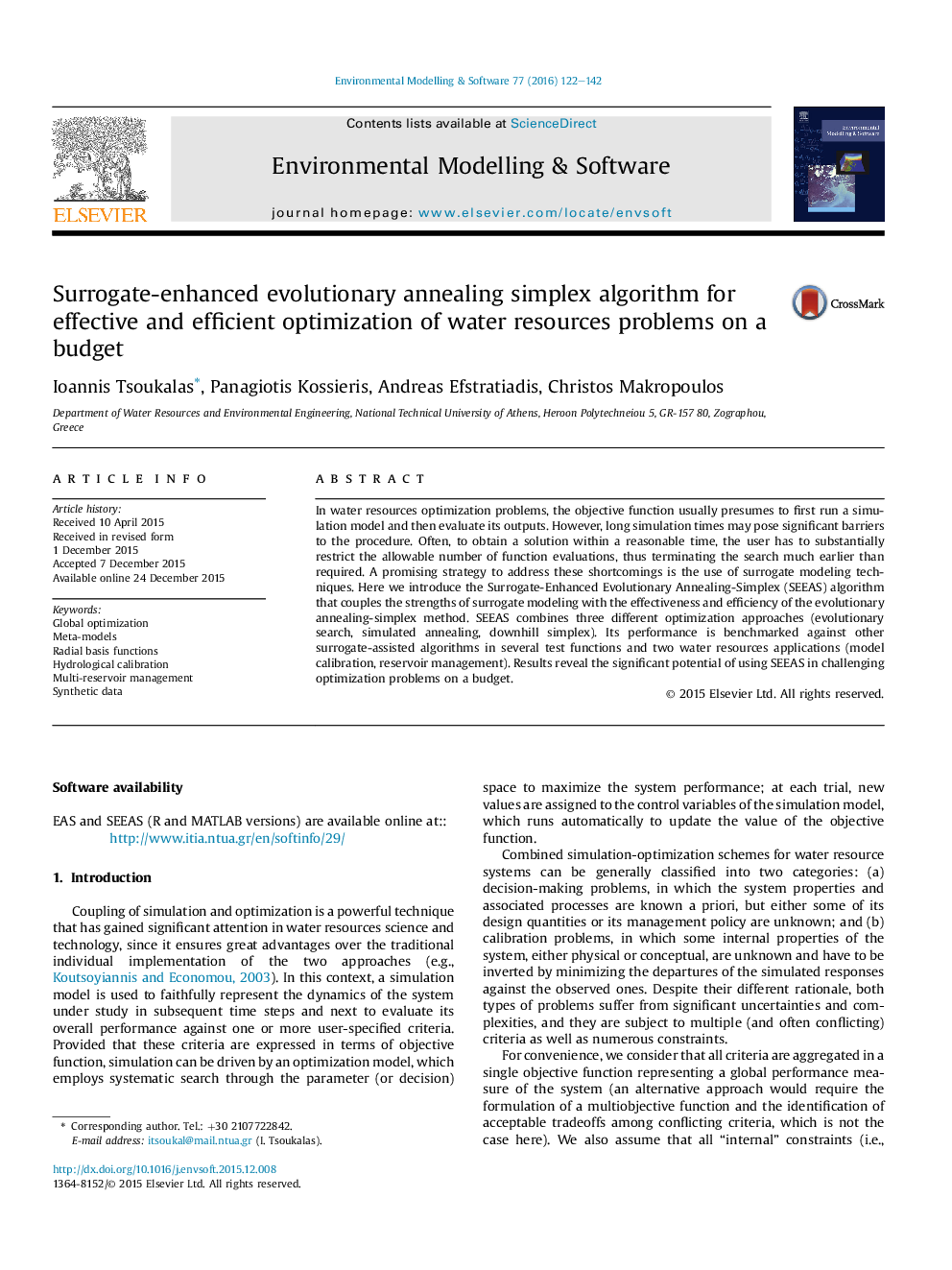| Article ID | Journal | Published Year | Pages | File Type |
|---|---|---|---|---|
| 569035 | Environmental Modelling & Software | 2016 | 21 Pages |
•The novel Surrogate-Enhanced Evolutionary Annealing Simplex algorithm (SEEAS) is proposed.•Surrogate model is used as global search routine and for identifying promising transitions within simplex-based operators.•SEEAS outperforms alternative methods in 6 test functions, in 15 & 30 dimensions and for 500 & 1000 function evaluations.•SEEAS handles typical peculiarities of water optimization in hydrological calibration and multi-reservoir management.
In water resources optimization problems, the objective function usually presumes to first run a simulation model and then evaluate its outputs. However, long simulation times may pose significant barriers to the procedure. Often, to obtain a solution within a reasonable time, the user has to substantially restrict the allowable number of function evaluations, thus terminating the search much earlier than required. A promising strategy to address these shortcomings is the use of surrogate modeling techniques. Here we introduce the Surrogate-Enhanced Evolutionary Annealing-Simplex (SEEAS) algorithm that couples the strengths of surrogate modeling with the effectiveness and efficiency of the evolutionary annealing-simplex method. SEEAS combines three different optimization approaches (evolutionary search, simulated annealing, downhill simplex). Its performance is benchmarked against other surrogate-assisted algorithms in several test functions and two water resources applications (model calibration, reservoir management). Results reveal the significant potential of using SEEAS in challenging optimization problems on a budget.
Graphical abstractFigure optionsDownload full-size imageDownload as PowerPoint slide
